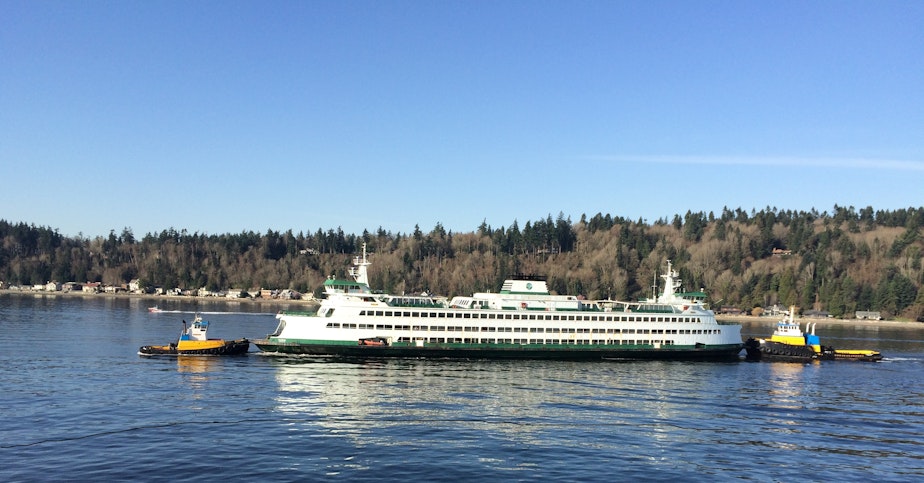The Working Woes Of Washington Ferries In Their Late 40s

The ferry Tacoma returned to service last weekend, ending an eight-month hiatus in the repair shop.
Last July, the ferry suffered a power failure and went adrift on the Seattle-to-Bainbridge Island route. Its loss created a cascade of service failures, showing the stress in the state’s ferry system.
The Tacoma crisis occurred when the ferry system was already unmoored. Its leader had quit. And ferries were missing sailings because of breakdowns or staff no-shows, creating stress for Washingtonians who rely on the system.
But last September ferries hired a new chief. Lynne Griffith came from the transit world, and she was local: She used to be the head of Pierce County Transit. Now she is applying what she knows about operating a bus system to ferries, which faces many of the same issues but also distinct challenges.
Forty percent of Washington’s fleet is over age 40, and the state’s policy is to try to keep vessels until they reach age 60.
Sponsored
But older vessels break down more often. Currently the vessels that spend the most time out of service because of maintenance or breakdowns are the ones in their late 40s.
Washington is building new ferries to replace several that are now pushing 60. But the Tacoma crisis revealed that replacing older ferries won’t solve an important stressor: the lack of standby vessels.
Not that younger ferries don’t have problems. The Tacoma, a teenager, is one of the largest in the fleet. And it was one of the most reliable in the fleet until a relay fault fried the vessel’s electrical system.
When it went dark on a July evening, there were not enough standby vessels to take up the passenger load.
Griffith says the solution to aging ferries is to “focus on continuing to build.”
Sponsored
The question is whether we can. In January, Griffith told the Legislature's Joint Transportation Committee that one new ferry is about to launch and work on another has just started.
“But I don’t think we should get too comfortable,” she said. “In the next 10 years there are three more vessels that are going to exceed the age of 60, and we’re going to have to replace them.”
It's a difficult message to hear in Olympia. The state is struggling to fix education or finish the 520 bridge. In that context, it is hard enough to face replacing the oldest vessels, and possibly overwhelming to consider the aged and underperforming ferries coming up behind them.
Griffith says it's not realistic to think the state can afford to replace every troublesome older ferry in the fleet.
"We're in competition with a lot of other priorities,” she says, “so I don't have an expectation," particularly about the chance to replace the 40-something ferries. But she says it may be that a more proactive maintenance program for the troublemakers will make them more reliable.
Sponsored
Gov. Jay Inslee’s budget proposal calls for $2.8 million more for maintenance. It also earmarks $1.5 million for fixing up an old ferry as a stand-in.
That continues a habit brought on by the Tacoma crisis: The state dragged the oldest ferry in the fleet, the Evergreen State, out of retirement when the Tacoma went dark.
